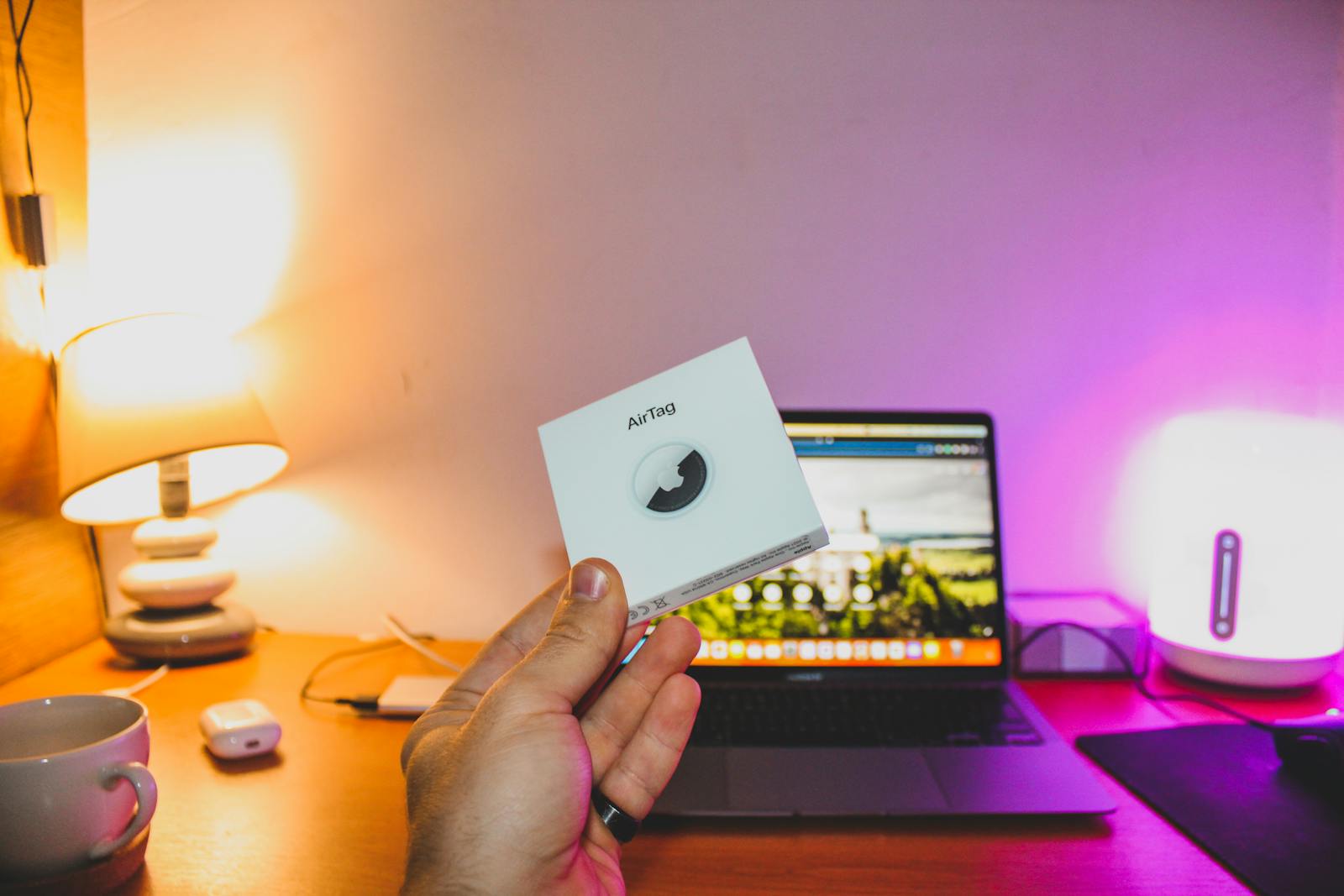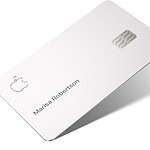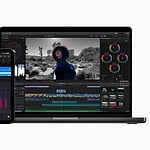Apple’s little white disc hasn’t had a hardware refresh since it debuted in 2021, but multiple supply-chain reports, iOS code references, and insider leaks now paint a clear picture of what the second-generation AirTag will bring when it finally arrives later this year. Here’s everything we know so far, plus what it means for current AirTag owners.
Projected Release Window
- Initial target: Mid-2025 (May–June) according to early insider reports.
- Current expectation: A slip to early fall 2025—most predictions now call the September iPhone 17 event the “safe bet,” with July still possible if production timelines accelerate.
Core Hardware Upgrades
- UWB 2 Precision Chip
The same second-generation Ultra-Wideband silicon found in iPhone 15/16 and Apple Watch Ultra 2 triples the effective Precision Finding range from roughly 15 meters to about 60 meters (≈200 feet). Expect faster directional arrows and less signal drop-off in crowded or indoor environments. - Tamper-Resistant, Louder Speaker
Apple is reinforcing the speaker housing to prevent it from being disabled—addressing common stalking workarounds. The new model will also feature a louder speaker for more audible alerts. - Smarter Battery Alerts
iOS 18.6 code hints at two warning thresholds (“Low” and “Very Low”), giving owners better visibility into their AirTag’s remaining life. The tracker is expected to continue using the familiar, user-replaceable CR2032 battery. - Vision Pro & Spatial Finding
Code and rumors suggest the AirTag 2 will feature integration with Apple Vision Pro, allowing users to visualize the tracker’s direction and distance in augmented reality—potentially adding a 3D arrow or floating marker within a headset’s view.
Privacy & Cross-Platform Safety
Building on Apple’s collaboration with Google, the AirTag 2 will support the cross-platform standard for detecting unwanted tracking. Android and iOS devices alike will receive consistent alerts and faster notifications when unknown trackers are detected nearby—improving safety and deterring misuse.
Design & Price Expectations
Don’t expect a big redesign: the familiar puck shape, stainless-steel battery cover, and accessory compatibility should all remain. A new matte finish and possible color accents are rumored, but overall aesthetics will stay consistent. Apple is expected to retain current pricing at $29 for a single AirTag and $99 for a four-pack.
| Feature | First-Gen AirTag | AirTag 2 (Rumored) |
|---|---|---|
| Launch window | April 2021 | Sept 2025 (likely) |
| UWB range | ~15 m | ~60 m (3×) |
| Speaker design | Removable grille | Tamper-proof, louder |
| Battery alerts | Single “Low” | Dual-stage warnings |
| Battery type | CR2032 | CR2032 (unchanged) |
| Vision Pro support | None | Native spatial overlay |
| Cross-platform alerts | iOS only | iOS + Android spec |
Should You Buy or Wait?
If you need trackers for summer travel, the original AirTag is still a top-tier option, offering unmatched accuracy thanks to Apple’s vast Find My network. However, if you can wait a few more months, AirTag 2 will deliver noticeable upgrades in range, security, and smart features. With pricing likely to remain the same, holding off until Apple’s September event is the smarter long-term investment.
AirTag (1st Generation) Review
Apple’s AirTag is a small tracking device that helps you find lost items. It works with iPhones to locate keys, bags, and other important things you might misplace. Apple AirTags are worth buying for iPhone users who often lose things, offering easy setup and accurate tracking capabilities.
The tiny disc-shaped tracker has earned praise for its tracking accuracy and long battery life. Setup takes seconds, and the precision finding feature guides users right to their lost items with on-screen arrows. Many users report that AirTags give them peace of mind knowing they can quickly find valuable items.
While the basic function is simple, AirTags use advanced technology that taps into Apple’s vast network of devices. This makes them more effective than many competitors, especially in crowded areas where other trackers might fail. The device combines Bluetooth with ultra-wideband technology for both long-range and precise close-up tracking.
Key Takeaways
- AirTags offer simple setup and accurate tracking that works best within Apple’s ecosystem.
- The replaceable battery lasts about a year, making AirTags low-maintenance compared to other trackers.
- Customer reviews highlight the peace of mind and reliability these small trackers provide.
Design and Build Quality
Apple’s AirTag combines sleek aesthetics with sturdy construction. The small disc-shaped tracker features premium materials with impressive water resistance and offers numerous customization options through accessories.
Materials and Durability
The AirTag showcases Apple’s commitment to quality construction. Made with polished stainless steel on one side and white plastic on the other, it feels robust and durable in hand. The stainless steel face resists scratches from daily use, though the white plastic might show marks over time.
The tracker weighs just 11 grams and measures 31.9mm in diameter with a thickness of 8mm. This compact size makes it easy to attach to various items without adding bulk.
Apple designed the AirTag with longevity in mind. The CR2032 battery compartment opens with a simple twist, allowing for easy replacement when needed. This battery typically lasts about a year with regular use.
Water Resistance
AirTags come with an IP67 rating for water and dust resistance. This means they can withstand being submerged in water up to 1 meter deep for 30 minutes.
This protection ensures the tracker continues working even when caught in heavy rain or accidentally dropped in shallow water. The sealed design prevents dust particles from entering the device.
The water resistance makes AirTags practical for outdoor use and increases their versatility. Users can attach them to backpacks, sports equipment, or other items that might be exposed to the elements without worrying about damage.
Aesthetics and Customization
The AirTag features a beautiful and well-designed minimalist appearance typical of Apple products. Its clean, simple look includes a shiny stainless steel side that can be personalized with free engraving when purchased directly from Apple.
While the AirTag itself doesn’t come with attachment methods, Apple and third-party companies offer various accessories like keychains, loops, and holders. These accessories expand the AirTag’s usability by making it easy to attach to keys, bags, and other items.
Color options for official accessories include various leather and silicone choices that complement Apple’s other product lines. Third-party options provide even more variety in materials, colors, and attachment styles to suit personal preferences.
Setup and Compatibility
Setting up an AirTag is straightforward with Apple devices, and recent updates have improved options for non-Apple users too. The process takes just minutes with an iPhone, while integration across Apple services enhances its functionality.
Pairing with iOS Devices
Pairing an AirTag with an iPhone couldn’t be easier. Users simply hold the AirTag near their iPhone and a connection prompt appears automatically. The setup process is quick and intuitive, taking less than a minute in most cases.
During setup, users name their AirTag based on what they’re tracking (keys, backpack, etc.) and register it to their Apple ID. This connects the tracker to Find My services.
The AirTag requires an iPhone running iOS 14.5 or later. Older models like the iPhone 6s and newer are compatible. Battery life typically lasts about a year, and the device will send a notification when power runs low.
No charging is needed as the AirTag uses a standard CR2032 battery that’s easy to replace. Just press and twist the metal back to access the battery compartment.
Integration with Apple Ecosystem
AirTags work seamlessly with the existing Apple Find My network, which leverages millions of Apple devices worldwide. This creates a massive network that helps locate lost items even when they’re far from their owner.
The precision finding feature works with iPhone 11 and newer models that contain the U1 chip. This feature provides directional finding powers with arrow guidance to lead users directly to their item.
Users can track AirTags on iPad and Mac computers through the Find My app. This cross-device functionality makes it easy to locate items from any Apple device signed into the same Apple ID.
AirTags also send separation alerts when items are left behind. These notifications can be customized to avoid alerts in trusted locations like home or work.
Tracker Detect App for Android
While AirTags are designed primarily for the Apple ecosystem, Android users aren’t completely left out. Apple offers the Tracker Detect app for Android devices, though with limited functionality compared to iOS.
The Tracker Detect app lets Android users scan for nearby AirTags that might be traveling with them. This addresses privacy concerns about unwanted tracking. However, Android users cannot set up or manage their own AirTags.
Unlike the seamless iPhone experience, the Android app requires manual scanning rather than automatic detection. This makes it less effective for daily use but still helpful for security purposes.
For households with both Apple and Android devices, this creates a hybrid experience. The AirTag must be set up with an Apple device, but Android users can still detect AirTags to prevent unwanted tracking.
Tracking Technology
Apple’s AirTag uses several advanced tracking methods to help users find lost items. The compact tracker combines different technologies to provide reliable location information in various situations.
Bluetooth and Find My Network
AirTags use Bluetooth to connect with your iPhone and other Apple devices. The standard Bluetooth range is about 30-40 feet in open spaces. This works well when you’re near your lost item.
What makes AirTags special is the Find My network. This network uses millions of Apple devices worldwide. When your AirTag is out of your Bluetooth range, other Apple devices can detect its signal.
These devices send the location data to Apple’s servers. This happens privately and anonymously. No one knows which device helped find your AirTag.
The Find My network works extremely well in places with many Apple users. In cities and busy areas, your lost item’s location updates frequently.
Precision Finding
AirTags include a U1 ultra-wideband chip that enables Precision Finding. This feature works with iPhone 11 and newer models that also have the U1 chip.
When you’re within Bluetooth range, Precision Finding guides you directly to your AirTag. Your iPhone screen shows the distance and direction to your item with arrows and haptic feedback.
The technology uses a combination of:
- Ultra-wideband signals
- Camera input
- ARKit
- Accelerometer
- Gyroscope
This creates a sleek and delightful way to locate items. Instead of just showing a dot on a map, it guides you step-by-step to your lost item.
Precision Finding works best in open spaces. Walls and large objects can interfere with the signal.
Lost Mode and NFC Capabilities
When you can’t find an item, activating Lost Mode adds another layer of tracking abilities. In Lost Mode, you can add your phone number and a message to the AirTag.
If someone finds your AirTag, they can tap it with any NFC-capable smartphone—even Android phones. This brings up your contact information so they can reach you.
Lost Mode also alerts you when your AirTag is detected by the Find My network. You’ll receive notifications with the location where it was found.
The NFC feature works without batteries or power from the AirTag itself. This means even if the AirTag battery is low, someone can still scan it to see your contact details.
This combination of easy-to-use features makes AirTags helpful for recovering lost items through community assistance.
GPS Integration
Contrary to what many believe, AirTags do not have built-in GPS. This helps keep the tracker small and extends battery life significantly.
Instead of direct GPS, AirTags rely on:
- The location data from nearby Apple devices
- The GPS in those helper devices
- The Find My network to relay position information
This approach has both benefits and limitations. The battery lasts about a year since it doesn’t need to power GPS hardware. The tracker also stays small and lightweight.
However, this means AirTags don’t update information as frequently as dedicated GPS trackers. In remote areas with few Apple devices, tracking becomes less reliable.
For tracking items in populated areas, this system works very well. For remote tracking, a dedicated GPS tracker might be better.
Battery Life and Maintenance
AirTags offer impressive power performance that makes them practical for everyday tracking needs. The simple battery system uses common batteries and smart power management to help users track items without frequent maintenance.
CR2032 Battery Replacement
Replacing an AirTag battery is straightforward and user-friendly. Apple designed these trackers with a twist-and-pull mechanism that gives quick access to the replaceable CR2032 battery. When the battery runs low, users receive a notification through their iPhone.
To replace the battery:
- Hold the AirTag with the metallic side facing up
- Twist counterclockwise until it stops
- Remove the cover and old battery
- Insert a new CR2032 battery with the positive side up
- Replace the cover and twist clockwise until it clicks
Not all CR2032 batteries work equally well in AirTags. Battery quality matters significantly, with premium brands typically lasting longer than generic options. Cheaper batteries might only last 3-6 months, while high-quality ones extend usage time considerably.
Power Efficiency
AirTags use Bluetooth Low Energy and Ultra-Wideband technologies that minimize power consumption. This efficient design allows them to operate for extended periods without draining the battery quickly.
The precision tracking features use power intelligently. When an AirTag remains stationary, it enters a lower-power state. During active tracking, it uses more energy but still maintains efficiency.
Several factors affect power consumption:
- Frequency of location updates
- Environmental conditions (temperature extremes can reduce efficiency)
- Signal strength in the area
- How often the item is moved
The Find My network optimizes battery use by leveraging nearby Apple devices rather than constantly pinging satellites or cell towers. This smart networking represents one of the major selling points of AirTags compared to competitors.
Battery Life Expectancy
Most users can expect their AirTag battery to last approximately one year with normal use. Apple’s official estimate of one-year battery life has proven accurate in long-term testing for many users.
Some AirTag owners report even better results. Multiple user accounts show batteries lasting up to two years with light use. This extended lifespan depends heavily on usage patterns and battery quality.
Factors that shorten battery life include:
- Frequent location pinging
- Regular use of the sound feature
- Extreme temperatures
- Poor quality replacement batteries
The battery indicator in the Find My app shows current levels, helping users plan replacements before the AirTag stops working. User experiences vary based on the specific battery installed and how the AirTag is used.
Security and Privacy
Apple AirTags offer powerful tracking capabilities, but this raises important questions about security and privacy. The balance between functionality and protection is crucial for users who want to find lost items without compromising personal data.
Safeguards against Unwanted Tracking
Apple has built several anti-stalking features into AirTags. If an unknown AirTag travels with you, your iPhone will alert you to its presence. This helps prevent people from tracking others without consent.
After a period of separation from its owner, an AirTag will make a sound to reveal its location. However, some reviews note these beeps might be too quiet in noisy environments.
For iPhone 11 and newer models, the precision finding feature can help locate hidden AirTags. This uses both Bluetooth and Ultra Wideband technology to point users in the right direction.
Android users can download the Tracker Detect app to scan for unwanted AirTags. This protection isn’t automatic like on iPhones but provides some security across platforms.
Personal Data Protection
AirTags use Apple’s Find My network, which relies on encryption to protect user privacy. Your location data stays private even when other Apple devices help track your AirTag.
The devices don’t store location history internally. Instead, location data passes through Apple’s servers in an encrypted format that even Apple can’t read.
Each AirTag contains a random identifier that changes regularly. This prevents long-term tracking and helps keep your movements private.
Some privacy experts have voiced concerns about how AirTags can be used beyond their intended purpose. While Apple’s safeguards are stronger than competitors, bad actors might still misuse them.
Apple continues to update AirTag software to improve privacy protections based on real-world feedback and concerns.
Performance and Range
Apple’s AirTag delivers impressive tracking capabilities by combining Bluetooth connectivity with Apple’s vast network of devices. Both its range and tracking accuracy set it apart from many competitors in the market.
Bluetooth Tracker Performance
The AirTag offers solid Bluetooth range for direct connections between your iPhone and the tracker. When testing in open spaces, it maintains connection up to about 100 feet, though this drops to around 30-40 feet when walls or obstacles stand in the way.
This performance is good for everyday use around the home. Many users report they can easily find keys and other small items inside their homes. The AirTag connects quickly to iPhones without lag or connection issues.
Battery life adds to its strong performance. A single CR2032 battery typically lasts about a year with regular use. The device also maintains consistent connection without draining your iPhone’s battery.
Location Tracking Accuracy
AirTag truly shines with its location tracking ability. It uses Apple’s Find My network, which turns millions of Apple devices into a mesh network that can detect your AirTag.
The precision finding feature on newer iPhones (with U1 chips) provides surprisingly accurate directional guidance. It shows not just distance but direction with an arrow pointing you toward your item. This works within about 30 feet of the tag.
For items far away, the Find My network provides location updates when any Apple device passes near your AirTag. While some users report disappointment with occasional delay in updates, most find the tracking reliable for luggage during travel and valuable items.
Ecosystem and Integration
Apple’s AirTag stands out because of how well it works with other Apple products. The tight connection between hardware and software makes finding lost items easier for Apple users.
Find My App Experience
The Find My app serves as the control center for all AirTag operations. Users can seamlessly track their items through this simple interface. The app displays an item’s location on a map with surprising accuracy.
When an AirTag is nearby, the Precision Finding feature activates on iPhone 11 and newer models. This creates an arrow-based guidance system that points users directly to their lost item.
The Find My network extends the tracking range by using millions of Apple devices. This means users can find items even when they’re miles away from home.
For privacy, AirTags use rotating encrypted identifiers. This prevents unwanted tracking while still allowing owners to locate their belongings.
Accessory Ecosystem
AirTags lack attachment holes, creating a market for accessories. Apple sells official keyring and loop options starting at $29, matching the price of the AirTag itself.
Third-party manufacturers offer more affordable alternatives. These range from basic holders to stylish leather cases that protect the AirTag while adding functionality.
Wallet cards, pet collars, and luggage tags designed for AirTags have become popular. These accessories transform the basic tracking disk into a practical guardian for valuable items.
The accessory market continues to grow, giving users more ways to carry and use their AirTags. This expansion helps overcome the device’s main design limitation.
Consumer Experience
Apple AirTags provide a unique tracking experience that blends technology with everyday practicality. Users report mixed feelings about these small Bluetooth trackers depending on their specific needs and environments.
Ease of Use
Setting up an AirTag is remarkably simple. The process takes just seconds – bring the tag near your iPhone, and it connects automatically. The straightforward setup makes these trackers accessible even for those who aren’t tech-savvy.
No charging is required as AirTags use replaceable CR2032 batteries that last about a year. This eliminates the hassle of regular recharging that comes with many other tracking devices.
The Find My app interface is clean and intuitive. Users can easily see their AirTag’s location on a map or trigger a sound to locate items nearby. The precision finding feature (for iPhone 11 and newer) displays an arrow pointing toward the AirTag with distance information.
Some users find the lack of a built-in keychain hole frustrating. Additional accessories are needed to attach AirTags to keys or bags, adding to the overall cost of $29 per tracker.
Real-life Applications
AirTags excel in densely populated areas where many Apple devices can detect them. They work stunningly well in urban environments, helping users locate lost items even miles away from their current location.
Common uses include:
- Attaching to keys, wallets, and bags
- Tracking luggage during travel
- Finding items around the home
- Locating pets (though not officially designed for this)
The performance varies significantly based on location. In rural areas with fewer Apple devices nearby, AirTags may be less effective at reporting locations when items are truly lost.
Some users report occasional tracking inconsistencies. As one Reddit user mentioned, the reliability isn’t perfect in all situations, which can be frustrating when you’re counting on it to find something important.
For most iPhone users, though, AirTags provide valuable peace of mind that justifies the purchase price, especially for frequently misplaced items.
Third-Party Products and Accessories
The AirTag ecosystem has grown rapidly with many companies creating useful add-ons for Apple’s tracking device. These products help overcome AirTag’s biggest design limitation—no built-in attachment method—while adding style and functionality.
Keychain and Holder Options
AirTags don’t come with holes for attachment, making cases and holders essential accessories. Basic holders start at under $10, while premium options can cost $30 or more.
Leather keychains offer a professional look and durability. Apple’s own leather keychain provides quality but costs about $35, while third-party options on Amazon often cost much less.
Silicone holders provide waterproof protection at lower prices. These come in many colors and designs, making them popular for casual use.
Wallet card holders let users slide an AirTag into credit card slots. Though slightly bulkier than a normal card, they work well in thicker wallets.
Metal options from brands like Nomad and Belkin offer maximum protection but add weight.
Notable Third-Party Brands
Elevation Lab creates unique AirTag holders that address specific needs. Their TagVault line provides extra-rugged protection for outdoor enthusiasts, while their pet collars integrate AirTags securely without dangling.
Belkin offers affordable yet well-designed options that balance price and quality. Their Secure Holder with strap remains popular for its simple yet effective design.
Nomad focuses on premium leather goods that age beautifully. Their leather holders cost more but use Horween leather that develops a nice patina over time.
Spigen and Caseology provide budget-friendly options without sacrificing durability. These brands offer multi-packs that let users outfit several items while saving money.
Some third-party options feature softer beeping sounds than official AirTags, which may be important to consider when making purchase decisions.
Price and Availability
Apple AirTags offer tracking capabilities at a competitive price point in the smart tracker market. The cost varies depending on whether you purchase a single unit or multi-pack, and several retail options exist for consumers looking to add these trackers to their Apple ecosystem.
Cost Comparison with Competing Trackers
A single Apple AirTag is priced at $29, while a four-pack costs $99, saving buyers about $17 compared to purchasing four separately. This pricing makes AirTags competitive with other tracking devices on the market.
When compared to competitors, AirTags offer good value. Tile trackers range from $25 to $35 per unit depending on the model. Samsung’s SmartTag costs around $30 per unit, putting it in the same price bracket as the AirTag.
What makes AirTags stand out is their integration with Apple’s Find My network. This extensive network of over a billion Apple devices helps track lost items without requiring extra subscription fees that some competitors charge.
For iPhone users who already own Apple products, the value proposition is strong since no additional apps or services need to be purchased.
Retail and Online Purchase Options
Apple AirTags are widely available through numerous retail channels. The most direct option is purchasing through Apple’s official website or retail stores, where buyers can also get personalized engraving at no extra cost.
Major retailers like Amazon, Best Buy, Target, and Walmart also carry AirTags, often at the standard price but occasionally with small discounts during sales events. Amazon frequently offers the four-pack with slight discounts of $5-10 off the regular price.
During holiday shopping seasons like Black Friday or Prime Day, shoppers can find better deals, typically 10-15% off regular pricing. Some retailers also bundle AirTags with accessories like holders or keychains.
Apple offers AppleCare+ for AirTags at $29 for two years of coverage, which includes two incidents of accidental damage.
Frequently Asked Questions
AirTags offer unique tracking capabilities with several important considerations for potential buyers. These small devices have specific battery requirements, tracking ranges, and varied uses for different items.
What is the battery life of an Apple AirTag and is it replaceable?
Apple AirTags have a battery life of approximately one year with normal use. This timeframe can vary based on how often the AirTag is pinged or used to locate items.
The battery is fully replaceable, using a standard CR2032 coin cell battery available at most stores. Users can replace it by twisting the back cover counterclockwise and inserting a new battery.
The iPhone will notify users when the AirTag battery is running low, giving plenty of time to purchase a replacement. No special tools are needed for this simple maintenance task.
How does the Apple AirTag perform when tracking luggage during travel?
AirTags have become popular for tracking luggage during travel, providing peace of mind for many travelers. They allow real-time location tracking of suitcases through the Find My network.
Users report success in locating misplaced bags at airports, even when airlines couldn’t find them. The precision finding feature helps travelers locate their luggage in crowded baggage claim areas.
One limitation occurs when traveling to areas with few Apple devices, as AirTags rely on nearby iPhones to relay location data. International travelers should check local regulations, as some countries have restrictions on tracking devices.
In what ways does the AirTag’s functionality differ for tracking pets compared to inanimate objects?
AirTags weren’t specifically designed for pet tracking, though many owners use them for this purpose. Unlike dedicated pet trackers, AirTags lack specialized features like health monitoring or activity tracking.
The small size makes them convenient to attach to a pet collar, but they lack built-in clips or attachment mechanisms. They require separate holders or collars with pouches for secure attachment.
Water resistance helps AirTags survive pet adventures, but they don’t provide real-time tracking like GPS pet trackers. Instead, they update location when in range of Apple devices, which works well in populated areas but has limitations in remote locations.
What are the primary benefits and drawbacks of using Apple AirTags?
The main benefit of AirTags is their seamless integration with Apple’s ecosystem. Setup takes seconds, with automatic pairing when held near an iPhone. The massive Find My network of Apple devices helps locate items almost anywhere.
AirTags offer impressive precision through UWB technology, allowing users to be guided to items with directional arrows. They’re also water-resistant and have replaceable batteries, unlike some competitors.
On the downside, AirTags only work with Apple devices, excluding Android users. They lack built-in attachment mechanisms, requiring separate purchases for keyrings or holders. Privacy concerns have also emerged regarding their potential for unwanted tracking.
How does the tracking range of AirTags compare to other Bluetooth trackers such as Tile?
AirTags have a Bluetooth range similar to Tile trackers, reaching approximately 30-40 feet in direct line of sight. However, AirTags gain significant advantage through Apple’s Find My network.
While Tile relies on other Tile users to detect lost items, AirTags leverage the hundreds of millions of Apple devices worldwide. This gives AirTags vastly superior coverage, especially in urban areas with high iPhone density.
For precision finding, AirTags use Ultra Wideband technology to provide directional guidance and exact distance measurements. This feature outperforms standard Bluetooth trackers like basic Tile models that only indicate signal strength.
What has been the user experience with AirTags according to the latest discussions on Reddit?
Reddit users frequently praise AirTags for their accuracy in locating misplaced items around homes. Many share success stories of recovering lost keys, bags, and even stolen items through precise location tracking.
Travel experiences dominate many discussions, with users recommending AirTags for luggage tracking. Several posts detail how AirTags helped recover mishandled baggage that airlines had difficulty locating.
Privacy concerns appear regularly in Reddit threads, with users discussing both anti-stalking features and their limitations. The community often shares creative uses and mounting solutions for AirTags, showing their versatility beyond Apple’s suggested applications.







